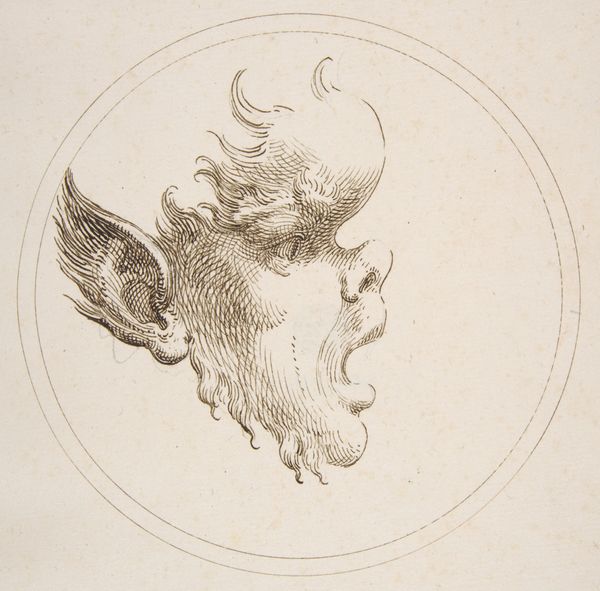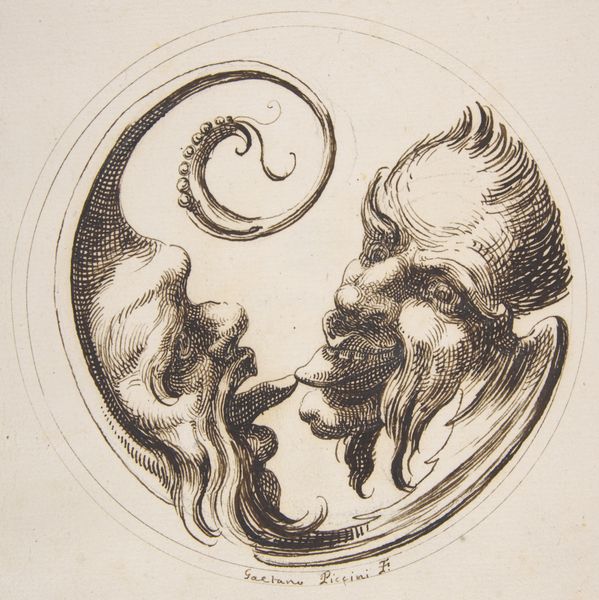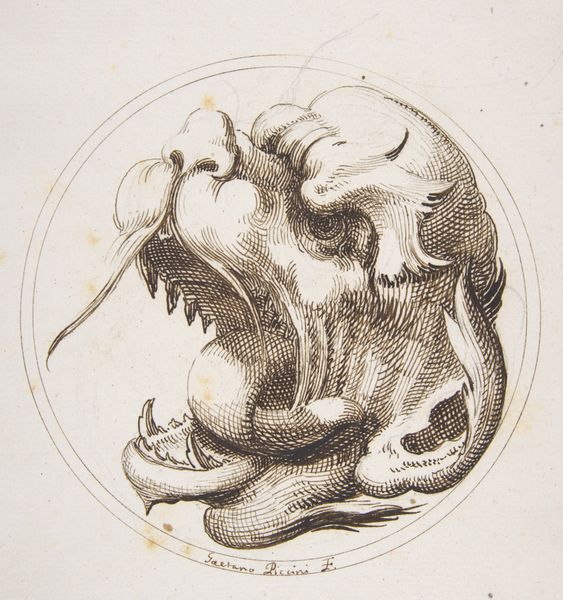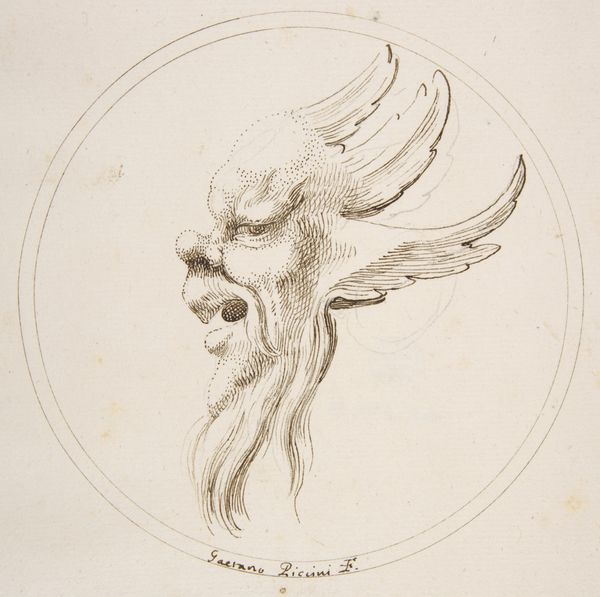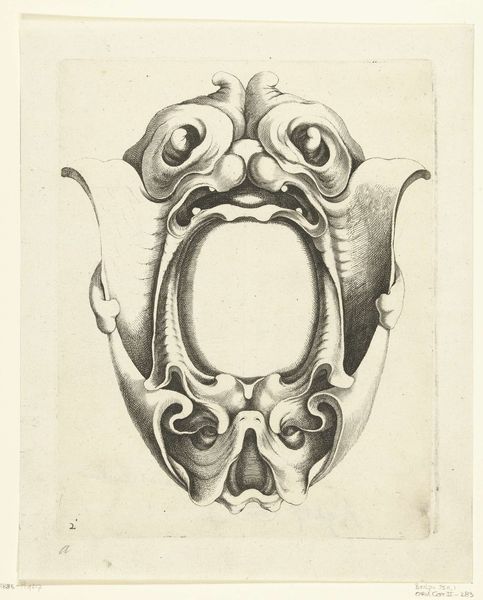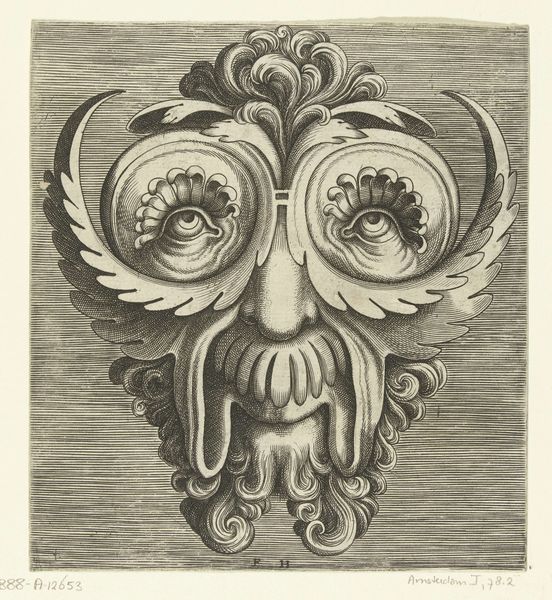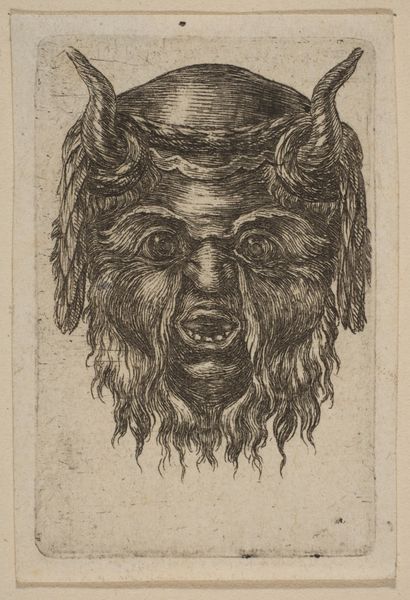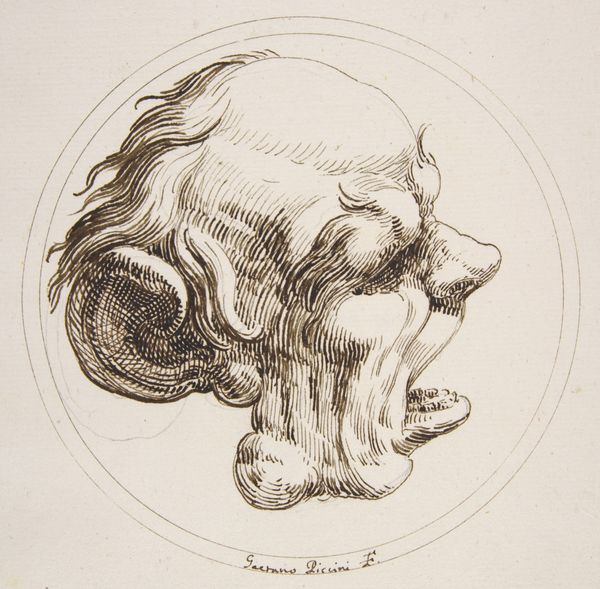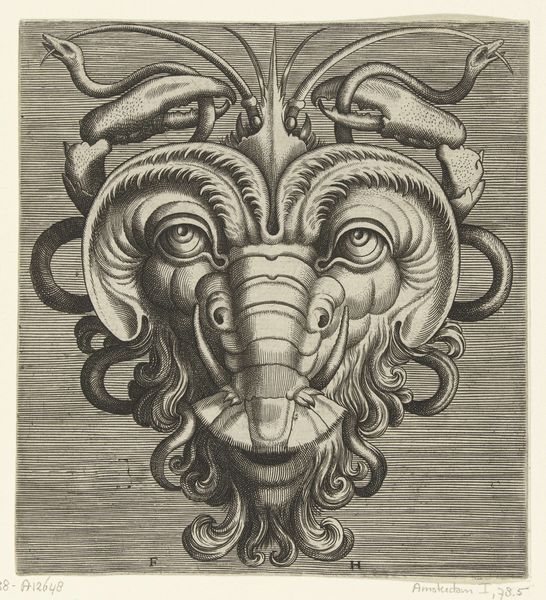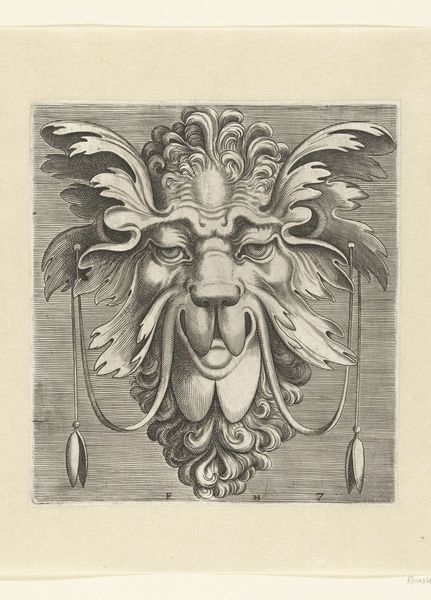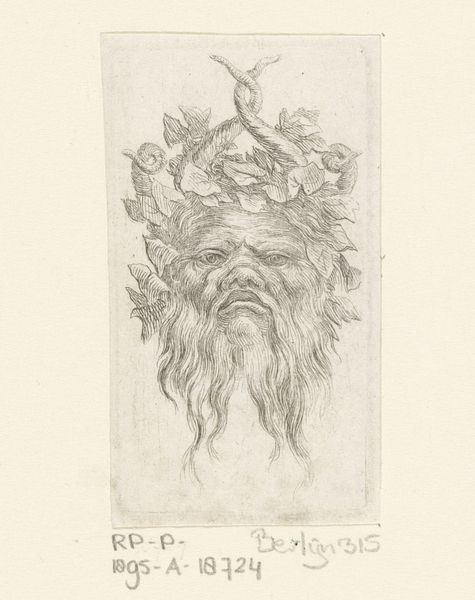
Grotesque Head With a Large Eyebrow Looking to the Left Within a Circle 1727
drawing, print, engraving
drawing
baroque
head
figuration
portrait drawing
grotesque
engraving
Dimensions: sheet: 12 7/8 x 8 1/2 in. (32.7 x 21.6 cm)
Copyright: Public Domain
Curator: This is "Grotesque Head With a Large Eyebrow Looking to the Left Within a Circle," an engraving by Gaetano Piccini from 1727. It's currently held in the collection of the Metropolitan Museum of Art. Editor: The first thing that strikes me is the meticulous line work. There’s a strange delicacy in depicting something so… unconventional. Curator: Absolutely. Consider the context of the Baroque period. While grand displays of wealth and power were common, there was also a fascination with the bizarre, with exploring the boundaries of human form. The grotesque head, circulated as a print, becomes accessible – commodified, even – for a wider audience, allowing them to engage with these ideas of transgression and the limits of representation. Editor: The cross-hatching is phenomenal. Notice how Piccini modulates the light and shadow, especially around the jowls and eyebrow, achieving such volume with simple etched lines. It's not merely representational; it's an exploration of form through pure line. Curator: Indeed. This wasn't simply about replicating an existing subject. Prints like this were vital for disseminating artistic styles, for influencing workshops across Europe. Piccini was part of a network of artisans, and the creation of these prints depended on specific labor practices, specialized tools, and systems of distribution within the engraver's workshop. This involved collaboration, skill sharing, and apprenticeship. It's not an isolated object but a record of specific modes of production and labor within Baroque printmaking. Editor: Look at how the circle contains it. Restricting the chaotic features into an idealised and classical shape, heightening the inherent tension between form and content, chaos and order. The circle emphasises this sense of formal containment, allowing the viewer to focus solely on the grotesque within a defined boundary. Curator: I agree; these images reflect deeper social attitudes towards beauty, ugliness, and otherness circulating in Baroque society. Think of it as an early form of social commentary delivered to its eager consumers. Editor: Precisely! Its grotesque exaggeration also invites us to probe the depths of visual and aesthetic interpretation. Curator: A fascinating piece viewed in this light indeed. Editor: One might agree.
Comments
No comments
Be the first to comment and join the conversation on the ultimate creative platform.
